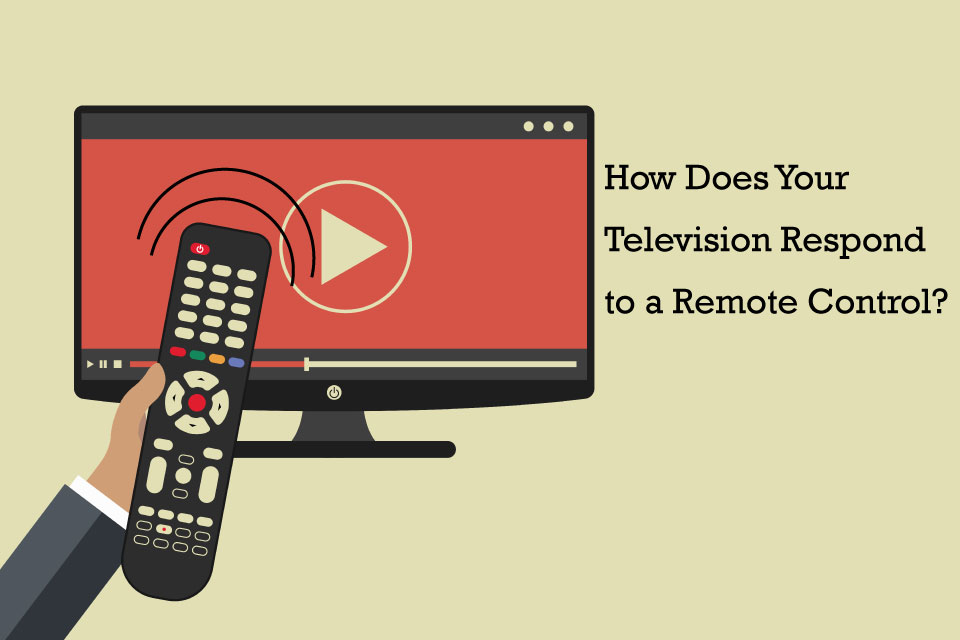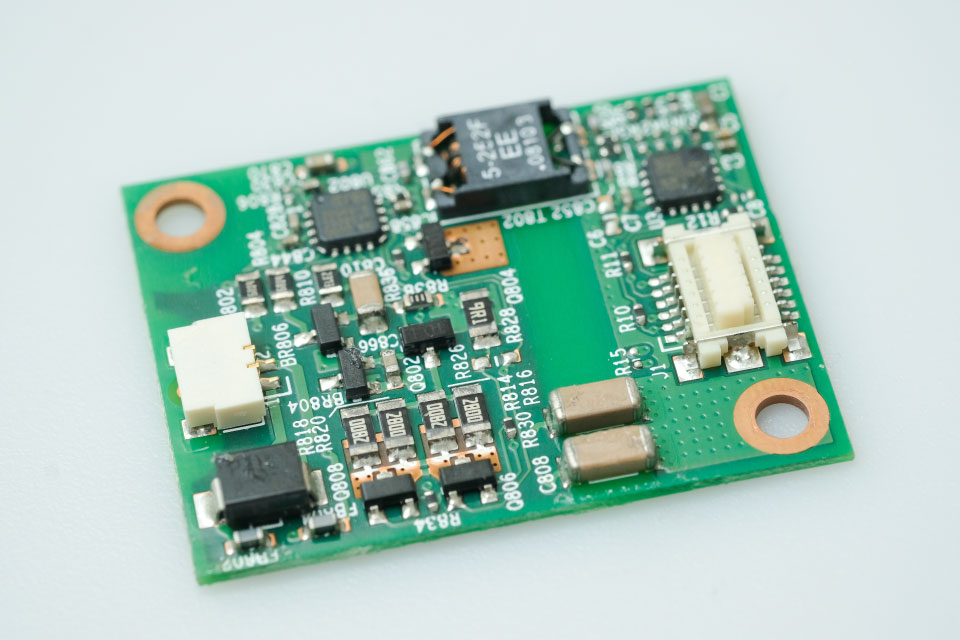Have you ever wondered how your television understands and responds to the commands that are given to the remote control?
Breaking apart a television remote control exposes a green rectangular board called a Printed Circuit Board (PCB). A PCB houses three major components: an InfraRed (IR) LED, contacts, and a microprocessor. The television remote control is populated with numerous buttons to perform a unique operation. Let’s say you push the volume up button, immediately a connection is established between the contacts on the PCB beneath the volume up button. The embedded copper wires, which look like nerves in the human body, run along the circuit carrying the command to the microprocessor. The microprocessor is the storehouse of codes, and acts as the brain of the remote control. The microprocessor’s job is to interpret the command assigned to each button in order to assist the IR LED communicate the command to the television.
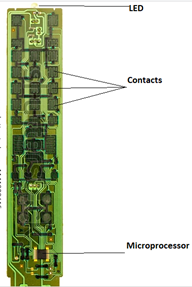
What makes wireless communication possible?
IR transmission lays the foundation of wireless communication that happens by transmitting signals in the air. Just as humans communicate through words, electronic devices communicate through signals.
In the case of a television remote control, an LED emits IR light, which carries the signal from the remote control to the television. The invisible IR light that hits the television flashes on and off 38,000 times per second which translates to a frequency of 38 kHz. There are distinct on and off patterns of the emitted IR light which conveys the different commands that are available on a remote control to the IR receiver located in the television. For example, for volume, the IR receiver receives the signal and increases the television audio.
Try standing between the remote control and the television while someone operates the remote. What you are doing is preventing the IR light from reaching the receiver, and no communication happens.
.
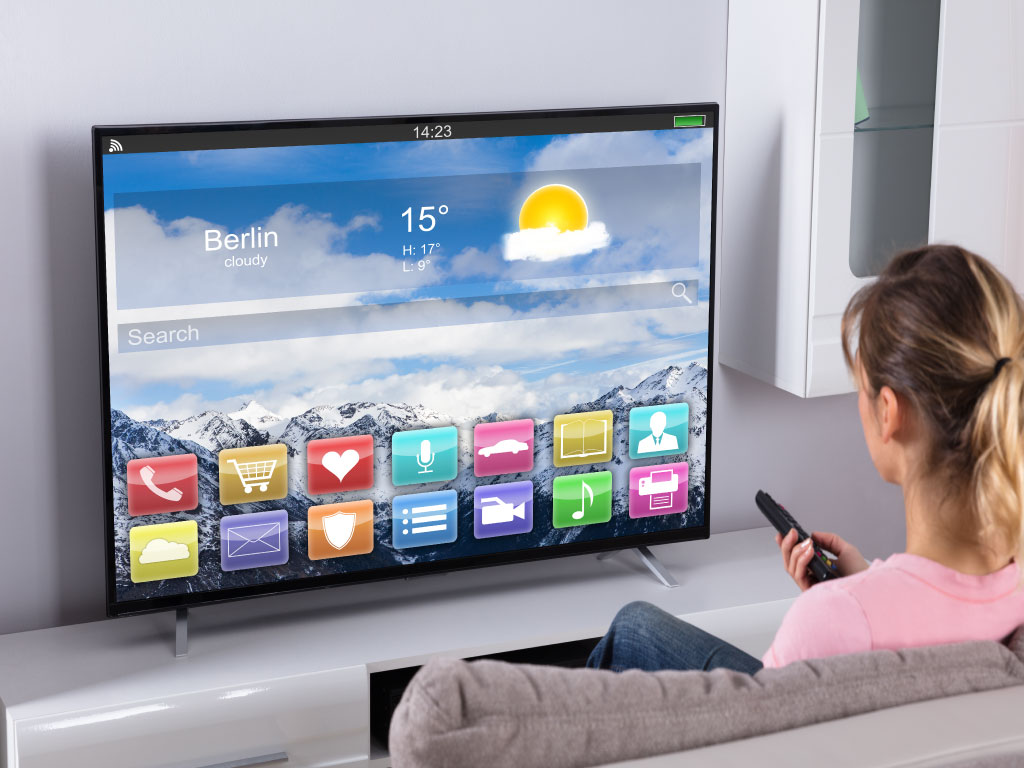
What language does a television remote control speak?
You might wonder how the IR receiver on the television smartly recognizes only the IR light from the remote control and is not distracted by any other light. It is true that the environment where the remote control is used contains other sources of IR, such as sunlight or the ceiling light, floating around. The receiver on the television is designed to detect only the IR wave in which each pulse modulates at 38 kHz. It is unnatural to find an IR wave with a frequency of 38 kHz in a home environment. This leaves the other sources of light outside the frequency of the receiver, which only listens to the command of the remote control.
The pattern of IR light pulses emitted from the IR LED contains an encoded command as a binary system of using the numbers 1 and 0 to indicate the on and off state. The pattern of the pulses is converted into a binary wave signal, making it accessible to the receiver. The distance between the pulses helps determine the on and off state of the binary wave signal. The binary wave signal helps the microcontroller in the television circuit decode the command and perform it.
Next time when you push a button on the remote, stop to think about what happens in a fraction of second.
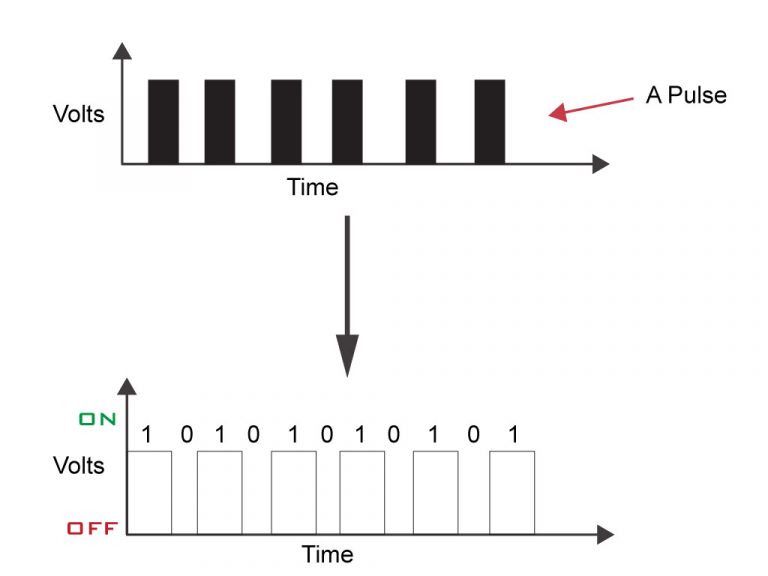
How can you keep up with the latest in electronics?
Today’s world revolves around electronics. Equipping oneself with a basic knowledge of electronics will help keep pace with the growing techno world. THORS’ Electronics Terminology course is designed to fill the existing knowledge gap among the learners in the field of electronics.
